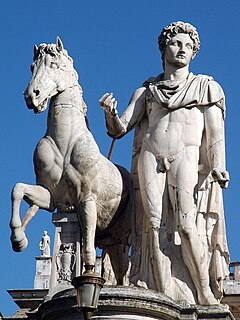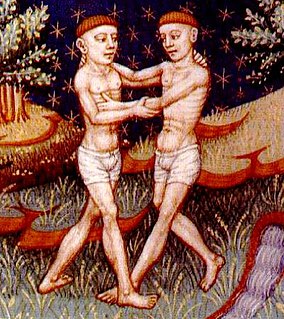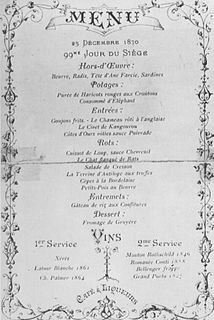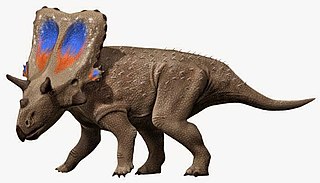See also
| This disambiguation page lists articles associated with the title Castor and Pollux. If an internal link led you here, you may wish to change the link to point directly to the intended article. |
Castor and Pollux may refer to:
| This disambiguation page lists articles associated with the title Castor and Pollux. If an internal link led you here, you may wish to change the link to point directly to the intended article. |
Castor most commonly refers to:

Castor and Pollux were twin half-brothers in Greek and Roman mythology, known together as the Dioscuri.

Castor is the second-brightest object in the zodiac constellation of Gemini and one of the brightest stars in the night sky. It has the Bayer designation α Geminorum, which is Latinised to Alpha Geminorum and abbreviated Alpha Gem or α Gem. It appears singular to the naked eye, but it is actually a sextuple star system organized into three binary pairs, made up of the stars Castor Aa, Castor Ab, Castor Ba, Castor Bb, Castor Ca, and Castor Cb. Although it is the 'α' (alpha) member of the constellation, it is fainter than 'β' (beta) Geminorum, Pollux.

Pollux, designated β Geminorum, is an orange-hued evolved giant star about 34 light-years from the Sun in the constellation of Gemini. It is the brightest star in Gemini and the closest giant star to the Sun.
Kastor may refer to:

Twins appear in the mythologies of many cultures around the world. In some they are seen as ominous and in others they are seen as auspicious. Twins in mythology are often cast as two halves of the same whole, sharing a bond deeper than that of ordinary siblings, or seen as fierce rivals. They can represent another aspect of the self, a doppelgänger, or a shadow. However, twins can also reflect a complete opposition of the other, such as the "civilized" Gilgamesh, and the "wild" Enkidu; or in the commonly known instance of good and evil twin identities.

The Temple of Castor and Pollux is an ancient temple in the Roman Forum, Rome, central Italy. It was originally built in gratitude for victory at the Battle of Lake Regillus. Castor and Pollux were the Dioscuri, the "twins" of Gemini, the twin sons of Zeus (Jupiter) and Leda. Their cult came to Rome from Greece via Magna Graecia and the Greek culture of Southern Italy.

Gemini (pronunciation: JEM-in-eye is the third astrological sign in the zodiac, originating from the constellation of Gemini. It is a positive mutable sign. Under the tropical zodiac, the sun transits this sign between about 21 May and 21 June. Gemini is represented by the twins Castor and Pollux, known as the Dioscuri.

Castor et Pollux is an opera by Jean-Philippe Rameau, first performed on 24 October 1737 by the Académie royale de musique at its theatre in the Palais-Royal in Paris. The librettist was Pierre-Joseph-Justin Bernard, whose reputation as a salon poet it made. This was the third opera by Rameau and his second in the form of the tragédie en musique. Rameau made substantial cuts, alterations and added new material to the opera for its revival in 1754. Experts still dispute which of the two versions is superior. Whatever the case, Castor et Pollux has always been regarded as one of Rameau's finest works.

Castor is a mountain in the Pennine Alps on the border between Valais, Switzerland and the Aosta Valley in Italy. It is the higher of a pair of twin peaks, the other being Pollux, named after the Gemini twins of Roman mythology. Castor's peak is at an elevation of 4,223 m (13,855 ft), and it lies between Breithorn and the Monte Rosa. It is separated from Pollux by a pass at 3,847 m (12,621 ft), named Passo di Verra in Italian and Zwillingsjoch in German.
The Battle of Locus Castorum took place during the Year of the Four Emperors between the armies of the rival Roman Emperors Otho and Vitellius. Locus Castorum was a village that existed in the 1st century Roman Empire roughly 15 kilometers from Cremona. It was also referred to as "the Castors" and "at Castor's." The village may have been the location of a temple to the Gemini twins, Castor and Pollux.

Pollux is a mountain in the Pennine Alps on the border between Valais, Switzerland and the Aosta Valley in Italy. It is the lower of a pair of twin peaks, the other being Castor, named after the Gemini twins of Roman mythology. Pollux' peak is at an elevation of 4,092 m (13,425 ft). It is separated from Castor by a pass at 3,847 m (12,621 ft), named Passo di Verra in Italian, Col de Verra in French and Zwillingsjoch in German.

Castor and Pollux were two elephants kept at the zoo Jardin des Plantes in Paris. They were killed and eaten, along with many other animals from the zoo, in late 1870 during the Siege of Paris. The two elephants may have been siblings, and were named after the twin brothers of Greek and Roman mythology. They had been popular before the siege for giving rides on their backs around the park, but the food shortages caused by the German blockade of the city eventually drove the citizens of Paris to kill them for their meat.
Locus Castorum was an ancient village of the Roman Empire era located in northern Italy approximately 12 miles (19 km) from Cremona, and midway between Cremona and Bedriacum. Its name derives from the Gemini twins, of Castor and Pollux. It was the site of the Battle of Locus Castorum.

Gemini is one of the constellations of the zodiac and is located in the northern celestial hemisphere. It was one of the 48 constellations described by the 2nd century AD astronomer Ptolemy, and it remains one of the 88 modern constellations today. Its name is Latin for twins, and it is associated with the twins Castor and Pollux in Greek mythology. Its symbol is

Alexandre Étienne Choron was a French chef.
Gemini Nunatak is a nunatak consisting of two almost ice-free peaks, 465 and 490 metres high, which are connected by a narrow rock ridge, standing 4 nautical miles (7 km) south of Borchgrevink Nunatak on Philippi Rise, on the east coast of Graham Land, Antarctica. It was charted by the Falkland Islands Dependencies Survey (FIDS) and photographed from the air by the Ronne Antarctic Research Expedition in 1947. It was named by the FIDS after the constellation Gemini, which contains the twin stars Castor and Pollux.
The Gemini Nunataks are two nunataks of similar size and appearance in a prominent position near the west wall of Shackleton Glacier, Antarctica, just southeast of Mount Cole. They were named by F. Alton Wade, leader of the Texas Tech Shackleton Glacier Expedition, 1962–63, after the constellation Gemini, which contains the twin stars Castor and Pollux.

Mercuriceratops is an extinct genus of herbivorous chasmosaurine ceratopsid dinosaur known from the Late Cretaceous of Alberta, Canada and Montana, United States. It contains a single species, Mercuriceratops gemini.

In ancient Mesopotamian religion, Lugal-irra and Meslamta-ea are a set of twin gods who were worshipped in the village of Kisiga, located in northern Babylonia. They were regarded as guardians of doorways and they may have originally been envisioned as a set of twins guarding the gates of the Underworld, who chopped the dead into pieces as they passed through the gates. During the Neo-Assyrian period, small depictions of them would be buried at entrances, with Lugal-irra always on the left and Meslamta-ea always on the right. They are identical and are shown wearing horned caps and each holding an axe and a mace. They are identified with the constellation Gemini, which is named after them.